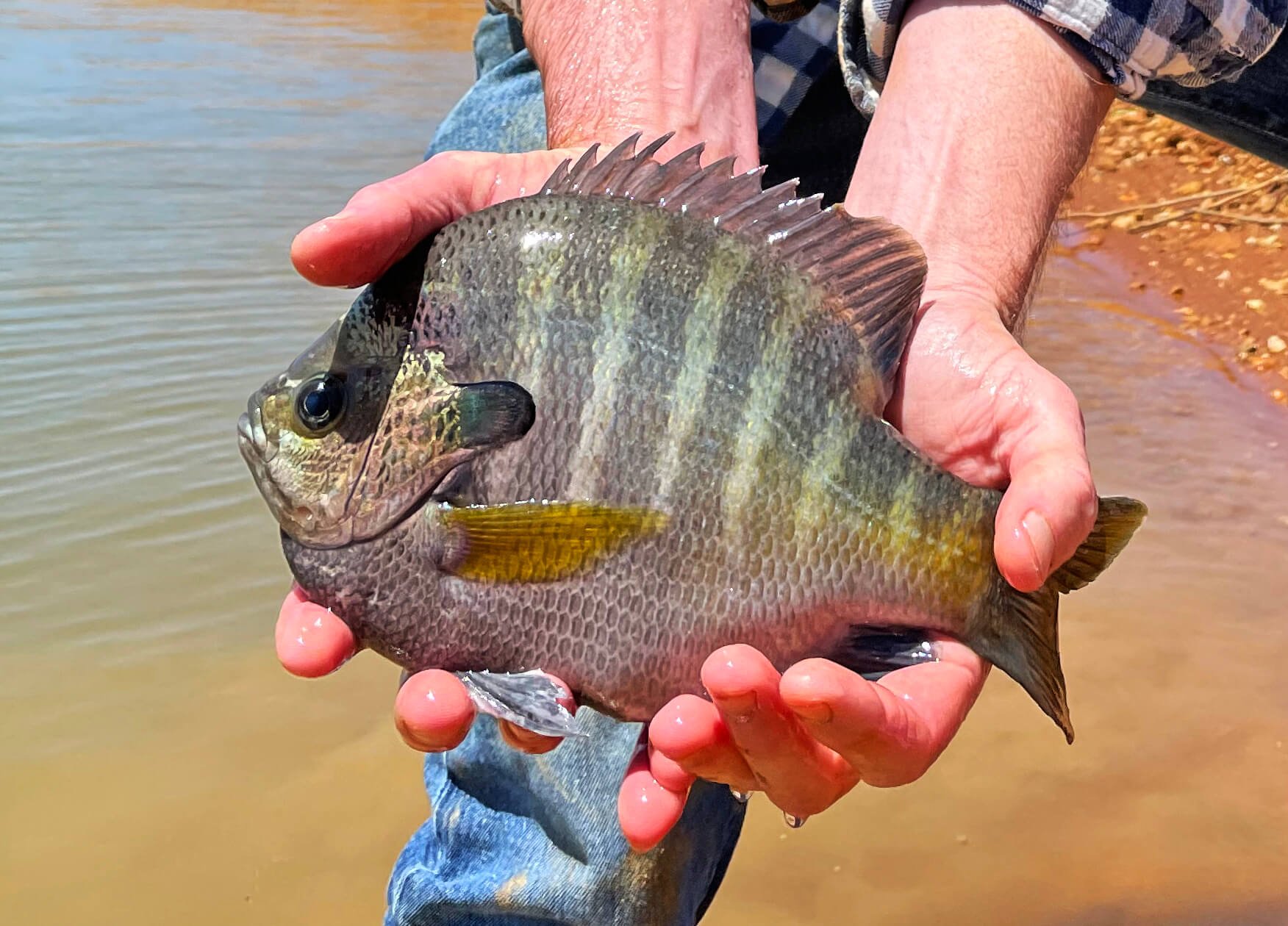
Coppernose
Bluegill.
Coppernose bluegill (Lepomis macrochirus purpurescens) are a subspecies of bluegill native to Florida and the Atlantic coast up through North Carolina.
In southern climates such as ours they grow faster and reach larger sizes than northern-strain bluegill. We just recently introduced the Lake Jackson fish to our brood stock, and are very excited about them: Lake Jackson is known for producing some of the largest bluegill of any public lake in the country, as two-pound bluegill are regularly caught from the lake, a rarity these days on public water. And because these fish came from the northernmost part of Florida in the panhandle, they will have better cold tolerance than most coppernose. We have already had a tremendous hatch of these fish, and they are growing at a phenomenal rate.
Bluegill are the forage mainstay in a trophy bass pond, as they spawn prolifically several times each year, stay in the ideal size range for bass to eat longer than species such as gizzard shad, and are not subject to winter die-offs as are tilapia and threadfin shad. Their first spawn occurs in the spring when the water temperature reaches 67 degrees; after that, a portion of the population will spawn every full moon throughout the summer and into August or September. One female bluegill can lay up to 50,000 eggs – that’s a lot of bass food!
Bluegill are also a popular sportfish, and the primary target of many anglers for their excellent eating and unparalleled fight pound-for-pound. They readily consume pelleted food, and can reach two pounds or more in ideal conditions. Coppernose can reach three pounds in properly-managed ponds (hint: none of the other pond management companies in our region know how to create those conditions, but we do – let us show you!).
